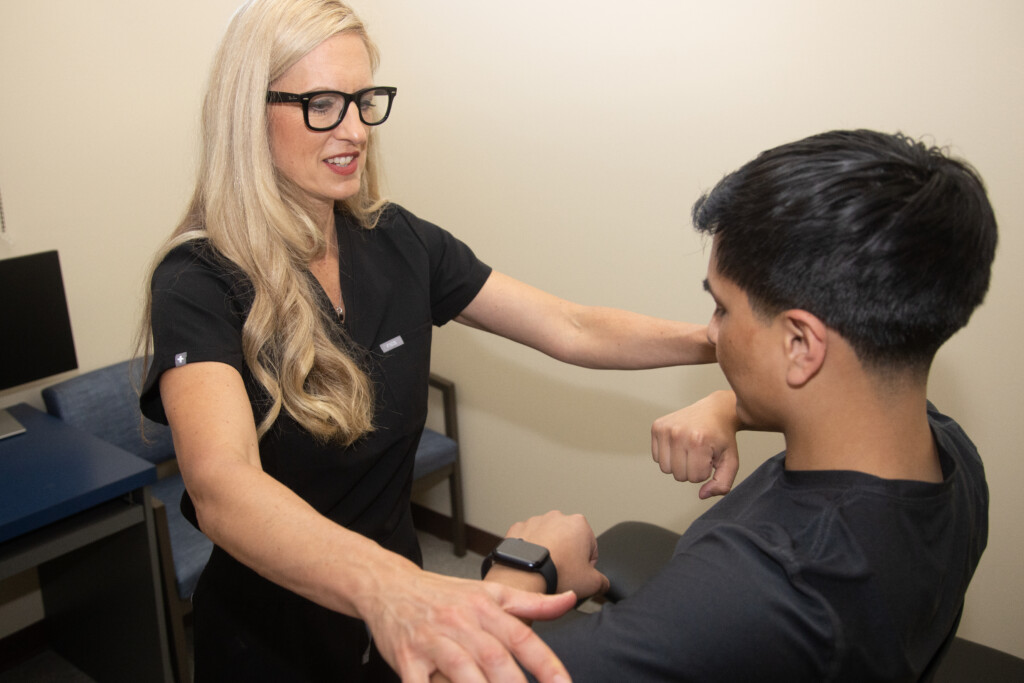A Winning Game Plan for Preparing Student-athletes for Fall Sports

Fall athletics are kicking into gear and student-athletes are preparing for the return to school and sport. Before our athletes get back into competitive play and balancing school, sports and other activities, it’s important to consider several factors for a healthy, successful sports season.
As sports-medicine orthopedic surgeons, we typically see more injuries in the fall, whether that’s ligament tears, muscle strains or overuse injuries. A winning strategy for an injury-free season starts with a holistic game plan—preseason conditioning, appropriate nutrition, intentional recovery and proper equipment.
Preseason Conditioning
The best preseason conditioning begins four to six weeks before the season officially starts. This allows for gradual increases to training intensity, frequency and duration, and helps prevent overuse injuries that keep athletes sidelined during the season. Focus on increasing cardiovascular endurance with running, building strength with weight training, and practicing sport-specific movements with drills and plyometrics to get your body game-ready.
Appropriate Nutrition
It can be tough to get through to kids and teenagers about many things, but proper nutrition and hydration for athletes is key. Starting with hydration, student-athletes should be drinking water throughout the day and hydrating before, during and after training sessions and games. Our dietitians recommend kids ages 9-13 have approximately 7-8 cups of water per day and people age 14 and over have approximately 9-11 cups of water daily. Adding fresh fruit to your diet is another great way to improve hydration.
Approaching sports nutrition with a balanced mindset helps athletes get the fuel they need to perform. Fuel up with a balanced mix of protein, healthy fats and carbohydrates from foods like green, leafy vegetables, lean meats, whole-grains and low-fat dairy. Snacking tends to be a time when nutrition slips. Swap out salty or sugary snacks with fresh fruit, vegetables, nuts and yogurt to feel ready for practice or competition. Get more tips on healthy snack swaps here.
Intentional Recovery
Rest and recovery are important for athletes of all ages and abilities. We see many patients with over-use injuries who aren’t getting the rest needed to stay healthy and perform at optimal levels. As a general rule, student-athletes (and adults) need 8-10 hours of sleep each night, but many people thrive on more or less. Our bodies are working to repair and grow muscle while we sleep while also regulating hormones and boosting the immune system. In addition, taking at least one day off from training each week is important for injury prevention and performance.
Proper Equipment
The final step to keeping injuries at bay is making sure sports equipment is in good condition and fits correctly. Proper shoes, pads, guards and helmets should be worn for every practice and competition. We recommend runners get fitted at a specialty running store for their first pair of shoes each season or whenever possible. Student-athletes are still growing in high school and the right fit is key to avoiding injuries. Inspect helmets, mouth and shin guards to ensure there are no cracks, frays or expiration dates, and make sure all sports equipment fits well.
To help athletes stay healthy and competitive, a proactive, well-rounded approach is essential. Prioritizing preseason conditioning, balanced nutrition, thoughtful recovery routines, and properly fitted equipment can significantly reduce the risk of injury and set the stage for a strong, injury-free season. Go Hawks!
Drs. Myers and Reem are the newest sport medicine orthopedic surgeons at Island Health. Read more about them at islandhealth.org/orthopedics.
